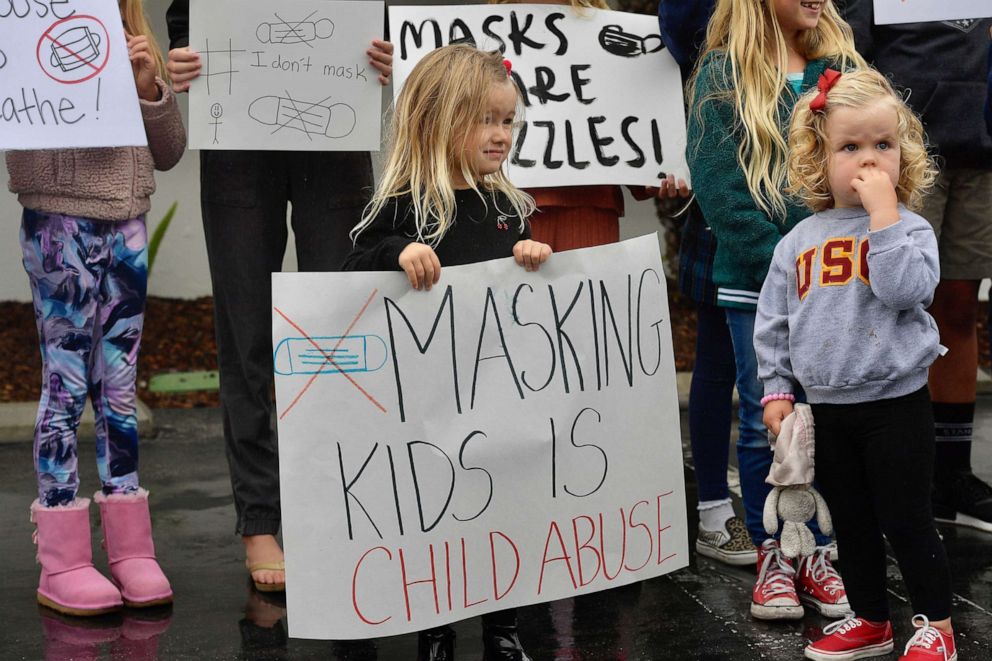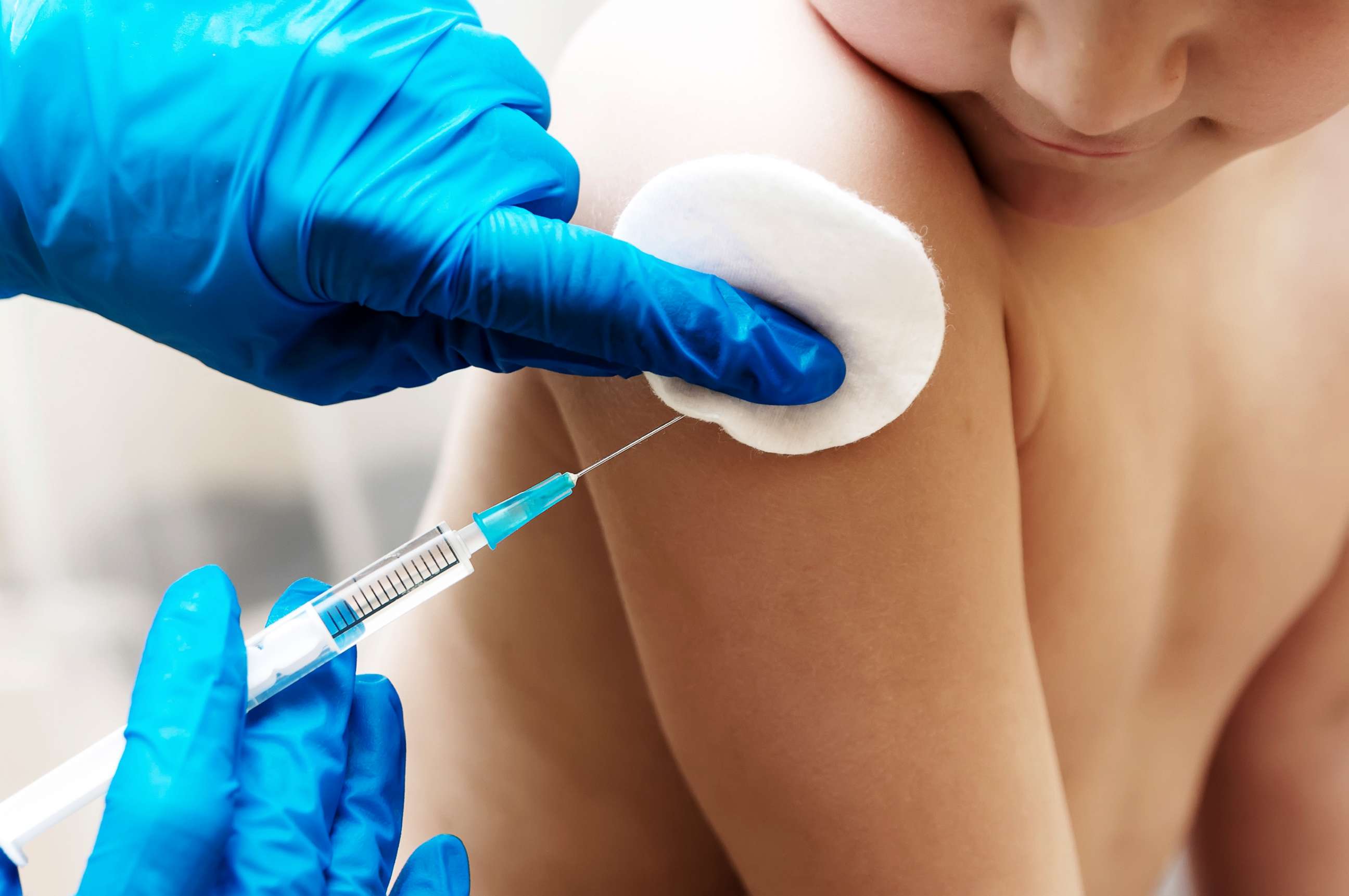No one-size-fits-all solution when it comes to COVID and kids: OPINION
How parents are dealing with COVID and kids as society opens back up.
The latest Centers for Disease Control and Prevention COVID-19 guidance that fully vaccinated individuals can go without masks and no longer have to maintain social distance is based on the latest scientific evidence, and shows the power of vaccination.
Those vaccinated are nearly resilient to severe illness, hospitalization and death. Plus, they have a very low likelihood of spreading the virus.
For those still unvaccinated, the guidance is also clear – maintain COVID-19-safe behavior which includes anyone over 2 years old wearing a mask.
Across the U.S., parents -- including me -- are contemplating how to move about this pandemic with our unvaccinated children yet again. This time though, it’s not the feeling of despair we first felt putting on masks and what that action represented – a pandemic. Rather, it’s more of a combination of excitement, relief and ambivalence. We’ve been conditioned over the past 16 months to protect and reduce risk.

Going back to taking any amount of calculable risk, big or small, is a weird feeling.
As the mother of a 1 1/2-year-old, a 5-year-old, and a 7-year-old, I am ecstatic we’re at a point in the pandemic where we can safely lift mask ordinances and no longer need to be socially distant for those of us who have been vaccinated.
But it’s not me that I’m worried about or the minuscule chance of getting infected with COVID-19 after being fully vaccinated or transmitting it to others.
It’s the rest of the approximately 36% of the population that still isn’t vaccinated or those previously not infected, who remain vulnerable to illness. And that includes my three young kids.
Trials for coronavirus vaccine for children under the age of 12 are still being tested for efficacy and safety with ages 5 to 11 potentially having a vaccine as early as September
While the U.S. has been moving full steam ahead in its vaccination campaign, results are not uniform. There remains a stark divide among states. In Northeast states, over 70% of adults have received at least one dose. But in the Deep South, the vaccination level hasn't even reached 50% in states like Mississippi, Alabama and Louisiana.
My 7-year-old asked me last night, "Mommy, am I vaccinated?” Upon hearing that he's not, he asked when he could get vaccinated, “so I can remove my mask too.”
Here’s how my family is operating during this transition period of open-season vaccinations for all those over the age of 12, and amid declining new infection rates across all 50 states, a raging fire of viral spread across the globe with more transmissible variants, plus uneven immunity coverage across the U.S.
Different families, different approaches to dealing with COVID and kids
First and foremost, it’s about risk tolerance. Some parents may choose to resume pre-pandemic life in its full capacity -- no masks, no distancing in all settings, at least once all adults or those currently eligible have been vaccinated.
Other parents may err on the side of caution, limiting activities or settings that are higher risk ( such as crowded indoor settings), or they may continue to apply risk-reduction measures like masking, distancing and seeking well-ventilated spaces for their unvaccinated children.
There are also parents who may take a more in-between approach. Their families may be partially vaccinated, since adolescents between the ages of 12 to 15 have only just been eligible within the last few weeks to get the first of a two-dose vaccine series.

Is there a right or wrong answer here? Well, it’s complicated because risk tolerance is so personal and it’s not one-size-fits all.
I’m in the caution boat. We’ll continue to follow COVID-safe behavior like wearing a mask in all indoor spaces and limit crowded, mixed venues. Science and data show us children are vulnerable to infection, severe disease, hospitalization and death from COVID-19, albeit at much lower rates than adults. Nearly 4 million children have been infected since the beginning of this pandemic, according to the American Academy of Pediatrics, and at least 327 died. Between just August 2020 and June 2021, over 40,000 children have been hospitalized. The recent CDC MMWR report highlights between March to April 2021, adolescent hospitalization rates for COVID-19 increased. And between January to April 2021, nearly one-third of hospitalized adolescents required intensive care unit admission, and 5% required invasive mechanical ventilation.
Also, as a parent, modeling COVID-safe behavior is important to us. I can’t expect my 5-year-old to put on a mask if he doesn’t see Mommy wearing one too or expect my youngest to understand nuances in public health guidance and make calculated risk reduction choices.
As we look to pivot from a pandemic lifestyle to a new normal, knowing life has never promised us a risk-free existence, we look at our own unique health conditions, risk levels and overall risk tolerance to help guide us in our individual and family-based decision making (a healthy dose of listening to that good ol’ mama instinct, can't hurt either) .
Some families may take more risk, others will be risk-averse. As more vaccines go into arms here in the U.S. and around the world, we’ll all be better protected in the long-run, including our kids as community transmission levels go down and their chances of coming in contact with someone who is infected diminishes by the day.
Syra Madad, DHSc, MSc, MCP, is the senior director of the system-wide special pathogens program at NYC Health + Hospitals.




